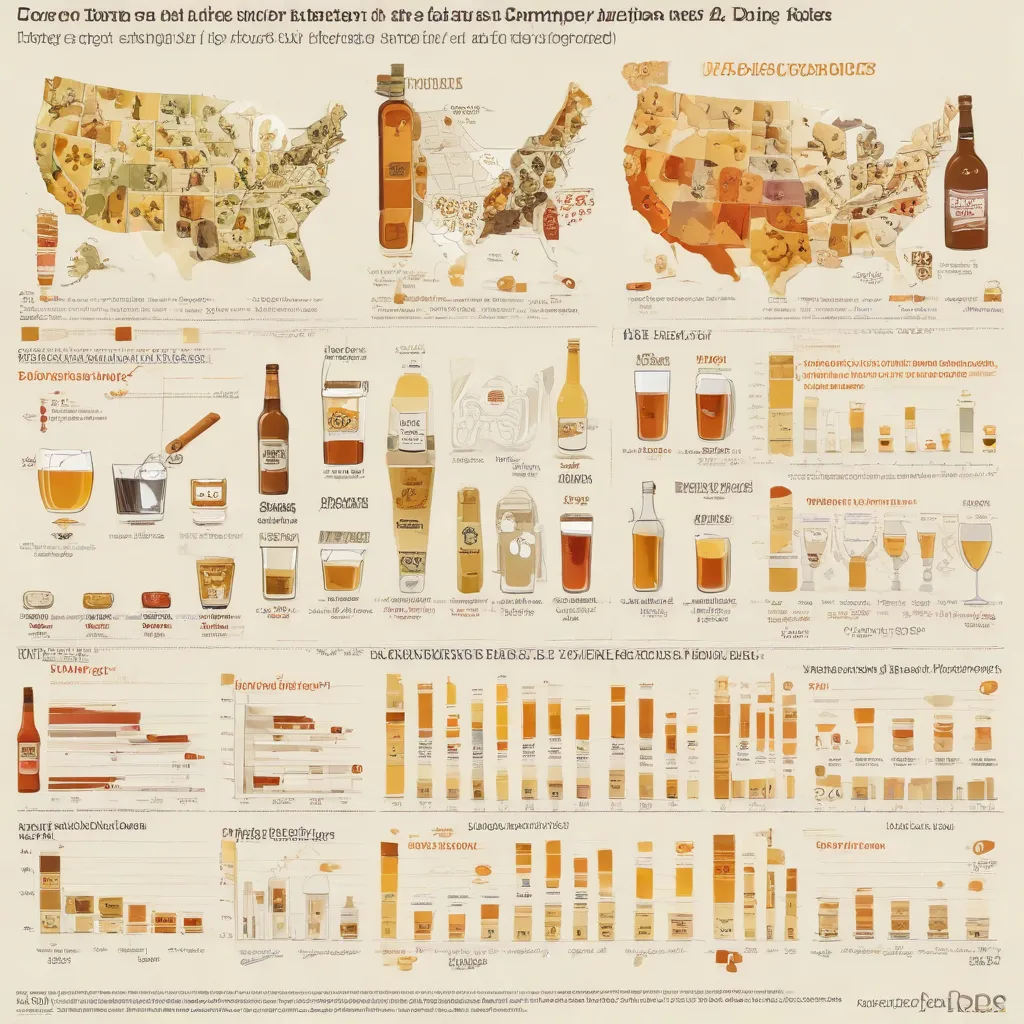
The United States has witnessed a concerning trend in recent years – the rising prevalence of both excessive alcohol consumption and poor dietary habits. These two factors pose significant challenges to public health, as they are major contributors to the development of chronic diseases, including life-threatening conditions like liver failure. While the relationship between alcohol use patterns and diet quality has been explored to some extent, the specific connection between different types of alcoholic beverages and dietary patterns remains underexamined.
Alcohol Consumption Patterns
Trends in Alcohol Consumption
Over the past decade, alcohol consumption in the US has steadily increased, with a particularly concerning rise in binge drinking and heavy drinking behaviors. This upward trend is especially pronounced among younger adults, raising alarm bells for public health officials. The types of alcoholic beverages consumed have also shifted, with beer maintaining its popularity while the consumption of wine and spirits has also grown significantly.
Sociodemographic Factors
Certain sociodemographic characteristics are associated with distinct patterns of alcohol use. For instance, higher-income individuals and those with college degrees tend to favor wine consumption, while beer is more commonly consumed by those with lower socioeconomic status and less education. Lifestyle factors, such as physical activity levels and smoking habits, also appear to differentiate alcohol consumption preferences.
Health Implications
The overconsumption of alcohol, regardless of beverage type, is a well-established risk factor for a wide range of health problems, including liver disease, cardiovascular issues, and certain types of cancer. However, the specific health consequences may vary depending on the alcoholic beverage of choice. For example, beer-heavy drinking has been linked to a higher risk of developing metabolic dysfunction-associated steatotic liver disease (MASLD), a rapidly growing liver condition in the US.
Dietary Quality Measures
Nutritional Indicators
Evaluating the overall quality of an individual’s diet is a crucial aspect of understanding their health status and risk of chronic diseases. The Healthy Eating Index (HEI) is a widely used tool that assesses dietary quality based on adherence to the Dietary Guidelines for Americans. This comprehensive metric considers various nutritional components, such as intake of fruits, vegetables, whole grains, and added sugars, to provide a holistic assessment of diet quality.
Dietary Assessment Methods
Dietary intake data is typically collected through self-reported 24-hour recalls or food frequency questionnaires, which allow researchers to estimate an individual’s typical dietary patterns. By comparing these self-reported data to the Healthy Eating Index, researchers can gain valuable insights into the relationship between diet quality and various health outcomes, including the risk of alcohol-related conditions.
Relationship to Health Outcomes
Numerous studies have demonstrated a strong association between higher-quality diets, as measured by the HEI, and reduced risk of chronic diseases, such as cardiovascular disease, type 2 diabetes, and certain types of cancer. Conversely, poor dietary quality, characterized by low intakes of nutrient-dense foods and high consumption of processed or sugary items, has been linked to an increased likelihood of developing these health issues.
Convergence of Alcohol and Diet
Alcohol’s Impact on Dietary Choices
The choice of alcoholic beverage type may have a significant influence on an individual’s dietary patterns. For instance, beer consumption is often associated with settings where the available food options tend to be high in calories, fat, and carbohydrates, while lower in fiber and other essential nutrients. In contrast, wine is more commonly paired with meals that include a variety of nutrient-dense foods, such as lean proteins, vegetables, and dairy products.
Dietary Patterns of Alcohol Consumers
A recent study published in the journal Nutrients examined the relationship between specific alcoholic beverage types and dietary quality among a nationally representative sample of US adults who currently consume alcohol. The findings revealed that beer-only drinkers had significantly lower Healthy Eating Index scores compared to wine-only drinkers, indicating poorer overall diet quality. Interestingly, individuals who consumed liquor or a combination of alcoholic beverages had dietary quality similar to wine-only drinkers.
Health Risks of Alcohol-Diet Interactions
The convergence of poor dietary habits and excessive alcohol consumption can have profound implications for an individual’s health. The combination of these two risk factors can substantially increase the risk of developing chronic diseases, such as liver failure, which is the leading cause of cirrhosis in the US. Addressing this intersection is crucial for effectively managing and preventing these conditions, as lifestyle changes targeting both alcohol use and dietary quality are essential.
Public Health Implications
Policies and Interventions
To address the growing public health concern surrounding the convergence of alcohol consumption and poor dietary quality, a multifaceted approach is necessary. Policymakers should consider implementing evidence-based strategies, such as taxation on alcoholic beverages, restrictions on alcohol marketing and availability, and improving access to healthy food options in communities with high rates of alcohol-related problems.
Nutritional Education Initiatives
Healthcare providers and public health professionals play a vital role in educating patients and the general public about the importance of maintaining a balanced diet, particularly for individuals who consume alcohol. Targeted educational campaigns that highlight the specific dietary needs and challenges faced by different types of alcohol consumers (e.g., beer-only drinkers) can be instrumental in promoting healthier lifestyle choices.
Integrated Approach to Alcohol and Diet
Ultimately, addressing the convergence of alcohol consumption and dietary quality requires an integrated, holistic approach that addresses both risk factors simultaneously. By understanding the complex interplay between these two elements and their impact on chronic disease risk, healthcare providers, policymakers, and public health advocates can develop more effective strategies to improve the overall health and well-being of the population. Through collaborative efforts and evidence-based interventions, we can work towards a future where the enjoyment of alcoholic beverages is balanced with the pursuit of a nutritious, well-rounded diet – a vision that aligns perfectly with the mission of the Wine Garden Inn.
